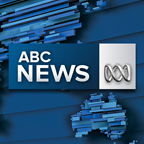
After a storm of negative headlines over the Spirit of Tasmania debacle and a week of concern about a budget projected to plunge the state into $8.6 billion of debt in four years' time, the government needed a win.
They could have been forgiven for thinking that the release of the development application for its much-debated Hobart waterfront stadium would deliver it.
Surely an improved cost-benefit analysis and the vision of a waterfront full of football fans after a Friday night match could shift the needle?
But at a press conference without Premier Jeremy Rockliff and Federal Infrastructure Minister Catherine King — despite both being in town — questions quickly turned to things the government would prefer not to talk about.
Blown budgets.
The cost has swelled from the previous $715 million estimate to $775 million, once it accounts for "escalation" in fees, materials and labour costs.
But with plenty of detailed designs yet to come, and lots of water to go under the bridge before the stadium is completed in 2029, critics say the cost increases won't stop there.
Thursday's cost estimate doesn't include everything you'd expect.
What's a stadium without big TVs, food and drink?
The reimagined Goods Shed as an entertainment venue at the new stadium. (Supplied: MPDC)
For $775 million, you get a stadium with no food or beer, without a PA system and the big flashy TV screens.
That's because the headline cost doesn't include almost $50 million of unfunded so-called "revenue-generating features".
The idea is that companies will line up to pay to use the space, meaning they won't really count as costs to the taxpayer at all.
But auditor KPMG, which compiled the financial impact report, finds more sweeteners might be needed to get those operators involved.
Talking about the likelihood of a caterer completing the kitchen and food and beverage fit-outs, KPMG says "there's little precedent … for such an approach being attractive to caterers within the Australian context".
It's already prompted the Greens to ask if a stadium without revenue-generating assets will create enough benefit to the economy to be worth the hassle.
It's also worth pointing out that every one of those commercial deals that doesn't materialise, or falls short of KPMG's estimates, adds to the total cost of the stadium.
Private investors needed to fill the stadium shortfall
And with the government continuing to guarantee that it's contribution to the stadium is capped at $375 million, it increases how much money will need to be poured into the project by corporate partners.
That's the trade-off for building a stadium at a cost of just $375 million to the state government — the more money the private investors put in, the more potential benefit they get back.
At the moment with a combined $630 million investment from the state and federal governments and the AFL, $145 million will need to be footed by private investors — assuming the stadium is actually built for $775 million.
Now the documents are released, the government's set to ramp up its search for private investors, and is incredibly confident it can clinch enough deals to cover any funding shortfall.
But news of the cost overruns could hardly come at a worse time.
Last week's budget didn't show a pathway back to surplus over the next four years, and the debt is projected to more than double in that time, reaching $8.6 billion in the 2027-28 financial year.
The government says the blowouts in the budget position are a combination of acting to protect vulnerable children in response to the state's commission of inquiry, and to build generational infrastructure, just like the stadium.
But a Liberal Party that likes to scream about its economic credentials from the rooftops is clearly worried by the rhetoric about the budget position, and the debt.
It's got Treasurer Michael Ferguson hinting that he's prepared to consider selling one government-business enterprise — but not Hydro Tasmania — if the right deal comes along, just like the government's selling the stadium's PA, kitchen and TVs to keep the cost down.
It's not just the government or opposition political parties worried about the debt.
Credit rating agency Standard and Poor's (S&P) currently has Tasmania's rating at AA+, the second highest on its global scale.
But its lead analyst, Martin Foo, says last week's budget was what he calls "credit negative", where the prospect of lending money to the state is deemed a bit riskier.
"Last week's budget did add considerable new spending to fund election commitments, to fund the response to the commission of inquiry, quite a bit of new infrastructure at both the general government level and for government business enterprises," he said.
"And of course, a lot of this is debt financed. So we're seeing a pretty significant escalation in debt and deficits."
Treasurer Michael Ferguson is fresh off delivering worrying news about Tasmania's budget deficit. (ABC News: Luke Bowden)
It's routine for credit agencies to review a state's credit rating after a budget.
But the nature of the comments would cause worry inside a government that had projected its budget would not cause a credit rating downgrade.
Each downgrade to a credit rating increases the interest rate a state has to pay on its debt.
It increases the amount it has to repay each week, or month, or year, and increases the time it takes to wipe the fiscal slate clean.
In short, it's another risk in a financial situation that leading economist Saul Eslake already says is pretty tenuous.
That's the case for the stadium too.
A political and financial risk, for a government that desperately wants the negative headlines to end.



























